
FSX Acceleration DeHavilland Vampire
De Havilland Vampire F3 recreates a landmark early jet fighter with crisp FSX-native modeling, DDS textures with bump and specular mapping, and period-accurate cockpit instrumentation. In Microsoft Flight Simulator X Acceleration, it includes authentic RAF and RCAF liveries, functional drop tanks, and smart animations such as pilot and gear changes tied to engine state and altitude.
- File: dehavilland_vampire.zip
- Size:22.7 MB
- Scan:
Clean (5d)
- Access:Freeware
- Content:Everyone
This freeware release brings a meticulously crafted De Havilland Vampire F3 for Microsoft Flight Simulator X Acceleration, featuring advanced texturing, refined modeling, and period-accurate liveries. Developed by Robert Richardson, this add-on seamlessly integrates classic jet fighter performance into virtual aviation. Two authentic paint schemes—one representing VT 812 of 601 Squadron RAF and the other for 17071 of the Royal Canadian Air Force—complement the visual fidelity.
Technical Installation Steps
After downloading the package, extract and place the primary contents into your “SimObjects/Airplanes” folder for Microsoft Flight Simulator X. Ensure that the individual files from the included “Effects” folder are moved into the simulator’s main “Effects” directory rather than transferring the folder as a whole. These steps allow the unique afterburner and lighting effects to function correctly.
Visual Model and Special Animations
The Vampire model showcases native FSX-format meshes with DDS textures, bump mapping, and accurate specular reflection. Users can load external fuel tanks by adding fuel to the associated tanks in the simulator’s “Fuel and Payload” menu. Once the aircraft is parked with the engine off, the pilot figure vanishes after a brief delay, while wheel chocks and other ground objects appear. At approximately 2,000 ft above ground level, the pilot’s oxygen mask and goggles automatically move into an operational position, reflecting real-world protocols.
Flight Deck and Handling Characteristics
This De Havilland Vampire F3 incorporates a classic single-seat jet layout dating back to the early years of turbine-powered flight. Essential flight controls remain as in standard FSX aircraft, with additional detail in cockpit instrumentation derived from period sources. Developers ensured the cockpit environment replicates actual pilot feedback, including distinctive pitch response and the unique centerline thrust characteristic of the Goblin engine.
Notes on Historical Context
First flown in September 1943 under wartime urgency, the DH.100 Vampire introduced innovative twin-boom architecture and was one of the earliest RAF jet fighters to enter service. The Mk3 variant succeeded the Mk1 and gained traction not only in the UK but also overseas, including Canada, Norway, and Australia. Some versions, like the FB.Mk 5, boasted reinforced wings suited for ground-attack missions while others—such as the D.H.113 and D.H.115—extended fuselage space for nighttime operations and training.
Additional adaptations, including the Sea Vampire, enabled carrier-based trials for the UK’s Fleet Air Arm. License production in countries like Italy (Macchi-built) and France (as the Sud-Est SE 535 Mistral) further broadened the Vampire’s global footprint. Nicknames such as “Spider Crab” reflected its development code name, while various air forces offered their own monikers for this versatile airframe.
De Havilland’s Goblin 3 turbojet powers the F3, generating around 3,350 pounds of thrust. With a maximum speed surpassing 500 mph at altitude and an operational ceiling near 42,800 ft, the Vampire proved itself a capable early jet even with relatively compact proportions. Enlarged drop tanks helped enhance range, and the nose-mounted 20-mm cannons provided substantial firepower for both air-to-air and ground targets.
Below is an additional period image capturing the classic lines of this pioneering aircraft in flight:
Key Contributors and Sources
Alongside Robert Richardson, several individuals supported the aircraft’s authenticity. Dave Garwood assisted with gauges and various XML components, while Peter McLeland provided operational notes and cockpit references. Martin Pengelly generously shared valuable materials, including “Vampire, The Complete History,” ensuring that this freeware model remains faithful to genuine flight data and visual details found in historical documentation.
Essential Specifications of the F3 Variant
- Engine
- Single D.H. Goblin 3, producing 3,350 lbs of thrust
- Empty Weight
- Approx. 7,283 lbs
- Maximum Takeoff Weight
- About 12,390 lbs
- Wingspan
- 38 ft
- Length
- 30 ft 9 in
- Height
- 8 ft 10 in
- Top Speed
- Up to 548 mph
- Operational Ceiling
- 42,800 ft
- Range
- Approx. 1,220 miles
- Armament
- Four nose-mounted 20-mm cannons and two underwing drop tanks
This pack offers an unmissable opportunity to fly a jet that helped usher in the modern era of aerial combat. With striking visual fidelity, historical accuracy, and smooth handling, this freeware package stands as a testament to the collaborative efforts of all involved in its creation.
The archive dehavilland_vampire.zip has 6 files and directories contained within it.
File Contents
This list displays the first 500 files in the package. If the package has more, you will need to download it to view them.
| Filename/Directory | File Date | File Size |
|---|---|---|
| 2010-10-22_16-37-30-12.jpg | 10.22.10 | 154.36 kB |
| 2010-10-22_16-38-2-644.jpg | 10.22.10 | 157.04 kB |
| DeHavilland_Vampire.zip | 10.23.10 | 22.43 MB |
| readme.txt | 10.23.10 | 4.02 kB |
| flyawaysimulation.txt | 10.29.13 | 959 B |
| Go to Fly Away Simulation.url | 01.22.16 | 52 B |
Installation Instructions
Most of the freeware add-on aircraft and scenery packages in our file library come with easy installation instructions which you can read above in the file description. For further installation help, please see our Flight School for our full range of tutorials or view the README file contained within the download. If in doubt, you may also ask a question or view existing answers in our dedicated Q&A forum.
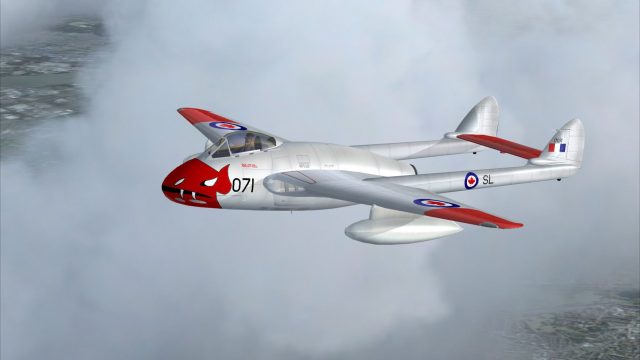
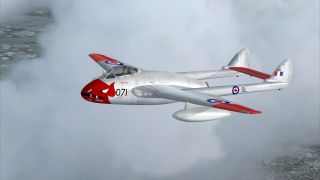
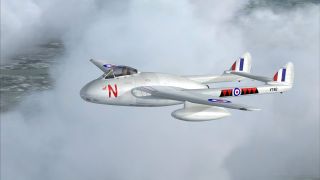




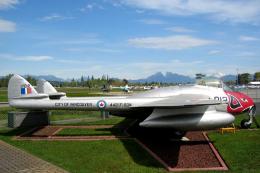
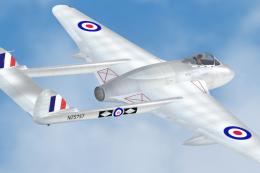
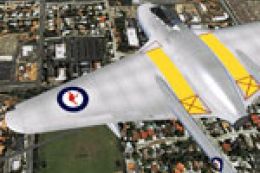
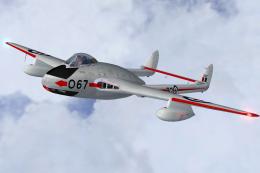
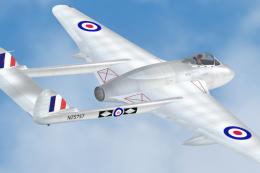

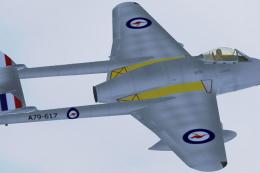

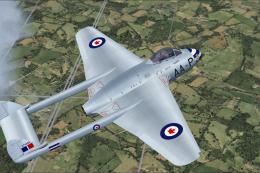
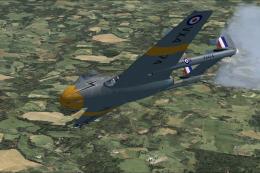
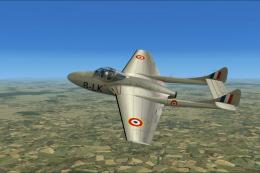
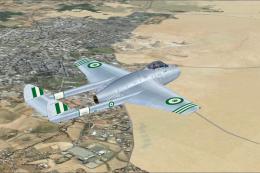
1 comments
Leave a ResponseThe content of the comments below are entirely the opinions of the individual posting the comment and do not always reflect the views of Fly Away Simulation. We moderate all comments manually before they are approved.
This version of the Vampire is such a joy to fly. I prefer it over many other fighters. Thanks!